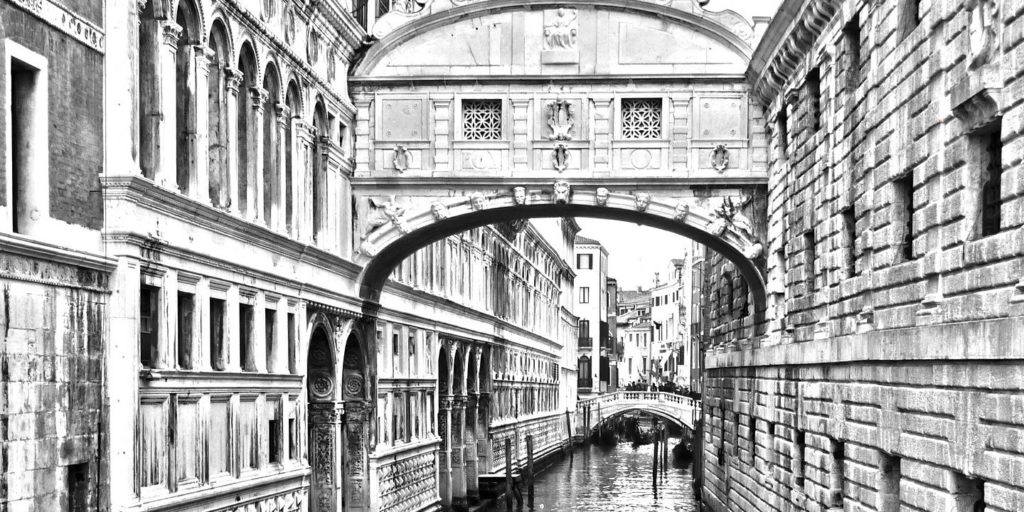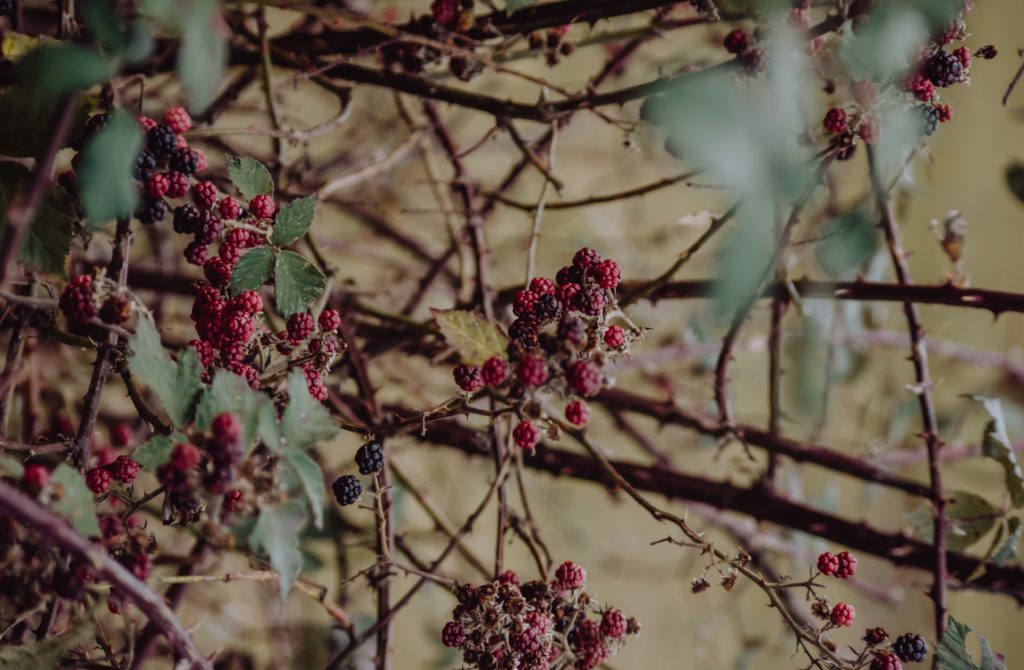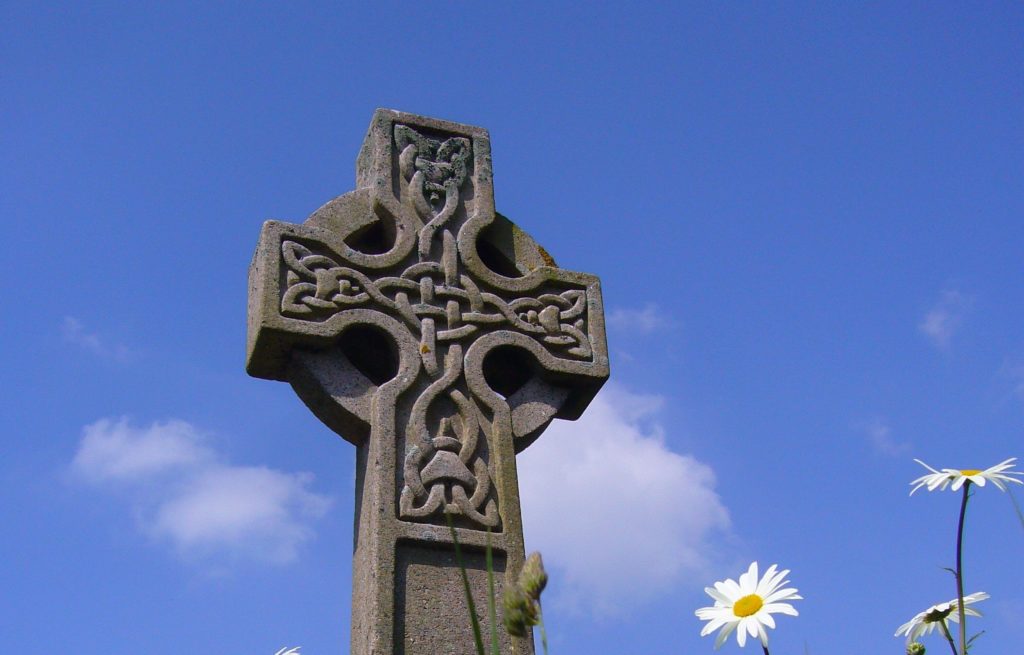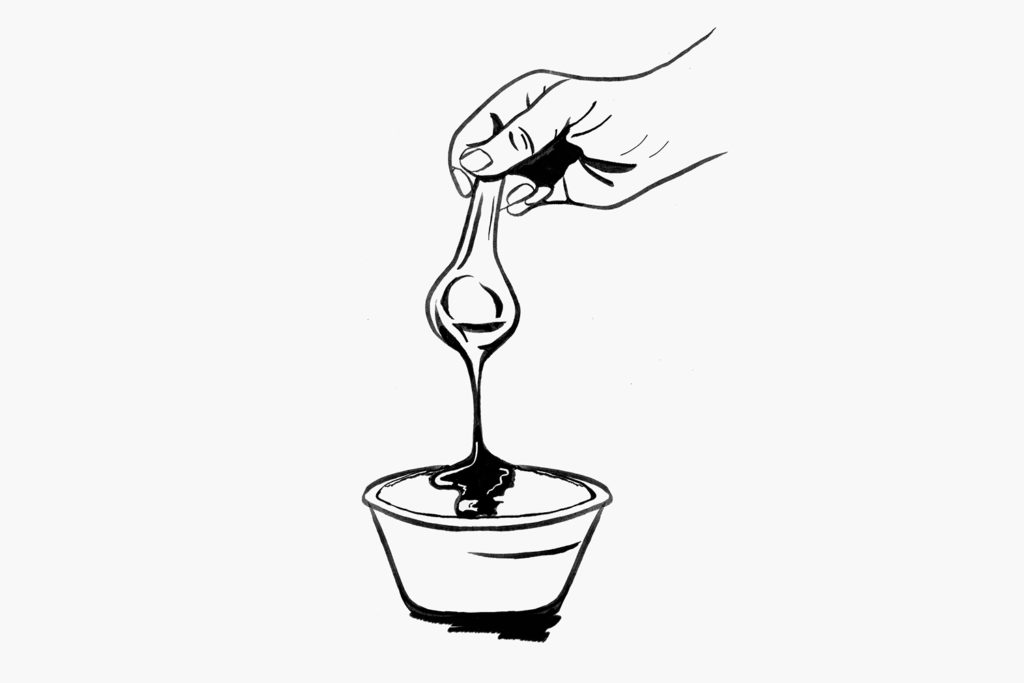The November sun has the thin clarity of pale white wine – strong enough to limn everything in light; nowhere near powerful enough to banish the damp cold that burrows into your marrow as soon as you stand still. The air smells of wet earth and the bruised green of grass and moss. It’s eleven AM and already the shadows are beginning to lengthen, a reminder that I’m working on borrowed time. In a tree somewhere above my head, on the edge of the park, a wood pigeon burbles away unseen, its call periodically erased by the skull-rattling buzz of a plane taking off from London City Airport.
Although I’ve only been at it for an hour, my jeans are mud-spattered to the knee and I know that a thin layer of soil particles has already ground through my gloves and etched itself into my palms. My boots have grown inches-thick overshoes of mud and matted grass. A spade is speared into the earth beside the hole I’ve dug. My gloved fingers cradle a willow sapling. Too young to have acquired branches, the frailty of its trunk (pale yellow and porcelain-smooth, mottled with grey) is in inverse proportion to its fearsome tangle of rust-orange roots, as knotty as a roadmap of London. I check and re-check the depth of the hole, nestling the roots within, making sure they’ve room to expand before filling it back in and patting the heavy black earth into place.
All around me, five hundred other people are doing the same. We’re turning a long, bare ribbon of earth into woodland. We’re planting trees.
∆
I started planting trees four years ago, in a moment of personal crisis. A time when I felt uprooted, in every sense.
Right after returning from the winter holidays, I’d gone to see my HR manager for what I’d assumed would be a routine matter: the letter from my employer that I’d need to apply for indefinite leave to remain in the UK, where I’d lived and worked for most of my adult life. I knew something was wrong when she asked me to close the door, but I was blindsided by her next words.
‘You don’t meet the new minimum salary requirements for applying for leave to remain. You can stay until your current visa ends, but after that I’m afraid you will have to leave the country.’
Get the best of Moxy directly in your inbox.
In the blink of an eye everything I’d taken for granted – my job, my home, the life I’d built for myself over the course of nearly fifteen years – had an expiry date slapped on it. To add insult to injury, the difference between my salary and the minimum permitted by the Home Office was risible.
‘Is there nothing I can do?’ My voice began to shake and I clamped my jaw on it. I wouldn’t, couldn’t allow her to see me go to pieces.
‘Of course there is. You can find a new job.’ (In my line of work, jobs are rare as hen’s teeth and notoriously poorly paid; besides, who would hire me on an almost-expired visa?) ‘Or you can get married.’ (I was single.)
I went straight to my boss, who was horrified. She went to her boss, who was equally horrified. He went to senior management, who made vague sympathetic noises but showed no compulsion to act.
I tried to gird myself to fight, but it was hard to muster the strength. I had stumbled into a grey void with no visibility in any direction. My life was on hold. Devising new projects at work seemed pointless; dating, even more so. Even the simple act of buying a book or making some small purchase for my flat took on a queasy uncertainty: should I really be spending money on something I might have to ship across the Atlantic or leave behind?
One of my oldest friends told me that his mother, who had voted Leave in the Brexit referendum the previous year, reacted with outrage when he told her of my predicament: ‘How dare they? She’s the good kind of immigrant!’ I could only respond with the grimmest of smiles, my throat too knotted to speak. I knew exactly what made me ‘good’ in her eyes: white, Anglophone, the holder of two postgraduate degrees and a glamorous-sounding albeit badly paid job. Starkly different – at least, in the eyes of the average Leave voter – from the vast majority of people who find themselves on the sharp end of the Hostile Environment policy. How differently would things have turned out, I wondered, if all those people who’d blindly supported this government’s nativism had stopped for one moment to consider the true cost of crudely dividing the country into two piles labelled good (native) and bad (foreign)?
Two weeks after my conversation with the HR manager, I happened to pick up a copy of Time Out on the way to work. It was a bad week for the planet – Trump’s inauguration was days away – as even such a normally hedonistic magazine acknowledged. Its lead feature wasn’t about bars or gigs or clubs; it was Fifty Ways You Can Make the World a (Slightly) Better Place. Most of the tips (give your smart clothes to a charity that supports homeless women getting back into the job market, patronise a bakery run by refugees) were well-meaning but not much different from things I would have done in ordinary times. But near the end of the article was something that appealed immediately, viscerally: Plant trees.
The cold horror of waking up on the morning of 9 November 2016, of sobbing my disbelief to my mother in California over Skype, was still fresh in my memory. Of all the countless things I feared about Trump’s rule, the profoundest was the doom he would spell for the environment: no coincidence, surely, that his contempt for the planet and contempt for its every inhabitant, himself excepted, went hand in hand. In the face of impending cataclysm, planting trees seemed such a small thing; pitiful, laughable even. I knew a cynic might liken it to bailing out the Titanic with a teacup. But at the same time, it felt like the most obvious way to make a tangible difference. As soon as I got home that evening, I looked up the charity, Trees for Cities, and signed up for their next planting event.
A week later I was standing in a field beside the Grand Union Canal in Greenford with some two hundred people who represented London in microcosm – ages ranging from five to eighty, myriad nationalities and walks of life – receiving instruction from eight young planting supervisors in bright green tabards in the fine art of planting trees. We broke into groups, shouldered spades, trooped to the planting site: a long, bare stretch of earth beside the water, riddled with traces of its past as a brickworks. The half-frozen ground resisted my efforts, throwing shards of brick into the path of my spade. It was a sunless day, so cold my breath smoked. But I didn’t feel it at all. Struggle and determination kept my muscles warm. When I finally got my first tree into the ground it was a moment of triumph.
I’m a shy person at the best of times and the prospect of losing my home had made me withdraw further into my shell than ever, unwilling to build connections that were only bound to be severed. Yet that day I found myself chatting with everyone around me. For the space of a few hours, my troubles faded into oblivion; all that mattered was helping each other get eight thousand trees into the earth before their roots could dry out. My nearest neighbour for most of the morning was a wiry septuagenarian with a piercing gaze and wind-tanned skin, a retired mechanical engineer from Goa who’d immigrated to Britain as a young man. For the past twenty-five years, he told me, he’d been planting trees all over West London.
‘You saw the wood we walked through to get here?’ he asked me, and indeed I had, a large, healthy stand of trees too close in size and age and slightly too regular in their arrangement to have sprung up at random. ‘That was the first one I helped to plant.’ And now he’s come back to build upon it, I thought. Please, let me be like him. I reached for another sapling, a hazel this time: one-third of the trees we were planting were fruit and nut trees, the beginnings of an edible forest that would feed humans and animals alike for years to come. If I am forced to leave, I mused, nestling the roots into their hole, then at least this good thing I’ve done will long outlast me.
Five hours later, in the failing light, I straightened my aching back and throbbing arms and looked around properly for the first time. Never had I seen so powerful an illustration of the old that many hands make light work. What had been unloved waste ground hours ago now bristled with thousands of saplings, a forest in embryo. Young un-branched trees are referred to as whips but I couldn’t help feeling that wands would have been more apt, or fuse wires, those green, life-transmitting fuses of Dylan Thomas’s poem. I didn’t know then about the phenomenon of the wood-wide web, the infinite connections and interminglings of roots and hyphae, of tree and fungus and bacterium, that effectively makes of a forest a single organism. Nevertheless, I had an inkling that what I’d experienced that day was the very opposite of Waldeinsamkeit, that marvellous German word that defies easy translation but which literally means ‘forest loneliness’, the melancholic and sublime sensation one experiences when alone in the woods. A new word was needed, even more of a mouthful: Waldzusammengehörigkeit. Forest togetherness.
∆
From that moment I was addicted. I’d rise early on Saturday mornings and cross London to wherever Trees for Cities had staked out spaces waiting to be made green again. My muscles grew accustomed to the motion of the spade and soon the ache was replaced with a deep, soul-satisfying burn. I learned about the childhoods of trees I’d only ever seen full-grown before – how surprisingly small are the roots of an oak, and how the roots of a willow whip already hint at the insatiable thirst and pipe-cracking tenacity of an adult’s. I felt a startling tenderness toward every tree I planted, imagining their roots unfurling and stretching within the earth, dodging obstacles (a pebble, a shard of brick, a buried snail shell) in slow motion, reaching towards each other, connections sparking like a vast neural network flaring to life. Sometimes I chatted with my fellow planters and sometimes I let the rhythm of the work lull me into a blissful solitary trance, interrupted only by the call for lunch and the delight of the fragrant steam rising off a bowl cradled in my frozen hands, filled with vegetable curry or couscous or an Ethiopian wat provided by a local restaurant or community group (immigrants, too). On a few occasions I tried to count the exact size of my contribution to the new woodland – the highest I managed in a day was fifty-one trees. But most of the time I lost count and eventually I stopped, deciding it was pointless relative to the work itself.
Trees can only be transplanted while they’re dormant, so the planting season begins in November and finishes in April. Halfway through April, I walked away from my last planting day at a park in Chadwell Heath. Some of the whips were already beginning to leaf out; blossom fuzzed the tips of more than a few. I couldn’t help wondering whether I would ever return to see the whips I’d helped to plant grow tall and strong, their branches bowed with fruit or crusted with lichen – or whether I’d even still be around when the next planting season began. But the hours I’d spent planting those trees had given me a measure of peace.
At the beginning of July, my boss’s boss called me into his office. He’d finally succeeded in persuading that powers that be to increase my salary to meet the requirements.
Four months after that, I stepped into a hideous grey office block in Croydon and emerged an agonising eight hours later with a letter from Her Majesty’s Government granting me the right to remain in the United Kingdom.
And two weeks later I was slogging up a muddy hillside in Perivale with a spade in my hand toward heaps of black plastic sacks of oak and beech whips waiting to be returned to the earth. I was home at last, in a place where I could finally sink my roots.
∆
Planting trees in London lays bare layers of history and geography I’d only ever been dimly aware of, if at all. The sheer immensity of the place emerges in the myriad variations in the soil and the traces of the past left within it: impossibly stony in Barking, brick-laden in Greenford, studded with building rubble in Isleworth, claggy clay in Beckenham, fine and crumbly as a heap of cake crumbs in Hackney Marshes (something which brings its own problems – that crumbly soil packs down so thoroughly there’s never enough left to refill a hole). More often than not, we’re planting on, in or around industrial ruins. I don’t think of this as erasing history. We’re altering our relationship to land, one patch at a time. No longer plundering it, but searching for some sort of harmony.
Sometimes that history lies right on the surface. Three years ago, I signed up to plant trees on a council estate in Shadwell. The route from the Overground station to the estate took me along Cable Street, and no sooner had I realised where I was than I found myself standing before the mural commemorating the Battle of Cable Street, the violent clash that took place on 4 October 1936 when Oswald Mosley’s British Union of Fascists tried to march through the East End. Some 20,000 anti-fascist demonstrators – Jews, trade unionists, communists, socialists, anarchists, Irish dockers (naturally, there was overlap among these categories) – turned out to stop them, barricading the streets and, when the barricades failed, giving battle with improvised weapons and bare hands until they forced the Blackshirts to retreat.
I stopped in my tracks, blinking back a sudden onrush of tears. Tears for the brave and desperate fighters, some of whom might have been my distant relatives, who beat back the parade of fascists (and, let it never be forgotten, the Metropolitan Police protecting them) with sticks and stones and chair legs, with fistfuls of rotten fruit, whatever came to hand. Tears of anger and despair at how rapidly the lessons and victories of the past were being swept away by a rising tide of nationalism and racism on both sides of the Atlantic – in the home of my birth and the home of my choice.
It’s long troubled me how the language of nationalism has insinuated itself into how we talk and write about nature. The back of my neck prickles when I hear the merits of native plants vaunted over the foreign, the introduced, the invasive. Swap the noun these adjectives modify from ‘trees’ or ‘plants’ to ‘people’ and it feels decidedly sinister. And yes, I get it: some plants wreak havoc outside their natural habitat. I’ve seen my share of Japanese knotweed rolling in foaming slow-motion tidal waves along London railway embankments, choking all in its path, and of the rancid-smelling foliage of ailanthus – the ‘Tree of Heaven’ that Betty Smith protested ‘would be considered beautiful except there are too many of it’ – swamping the edgelands around my childhood Chicago home. The garlic mustard that sprouts along British roadsides and woodland rides in Spring becomes, when transplanted to North America, an invasive weed. But for every invader, there are countless newcomers who are good neighbours. Who pitch in and do their part. Who become such an integral part of the landscape that we forget they didn’t always live here.
And where could this be truer than in Britain? My Collins British Tree Guide, a tome notable mainly for its bland objectivity, has this to say: Because of extinctions caused by successive Ice Ages, and the brief window between the last Ice Age and the area’s isolation by the flooding of the North Sea, the native tree flora of Britain and Ireland is singularly impoverished. There are, all told, only 80 species of trees that are believed to have arrived in these isles without human help. Many of the trees we think of as typically British are anything but. The English walnut is thought to have originated in Iran, or perhaps Kyrgyzstan. The sweet chestnut arrived on Roman ships. The horse chestnut, without which conkers, that classic game of British childhood, would not exist, traces its origins to Greece and Albania. That most British of fruits, the apple, first saw the light of day in the forests of what is now Kazakhstan. The London plane, like many Londoners, is the child of two immigrants, one from each hemisphere. As for the flowers in the archetypal English cottage garden, how many originated in these isles? My other Collins guide, the one for British wildflowers, which I requested as a gift to mark my hard-won leave to remain, admits that often the distinction between a native and an introduced species can be all but impossible to determine, and moreover that the date of about 1500 that divides an archaeophyte (a plant that’s been here long enough to be considered native for all intents and purposes) from a neophyte is ‘wholly arbitrary’. Erase these arbitrary cut-off points and how long does it truly take for a tree, a plant, to make itself at home, to convince everyone that it belongs? If it takes centuries for trees, for whom human time is an eyeblink, then what of humans – or this particular human, the great-granddaughter of immigrants, now an immigrant herself?
How long will it take me to grow my own roots?
∆
The estate where we were working was built over the ground where the mystic Emmanuel Swedenborg, for whom gardening and spiritual experience were inseparable, was first laid to rest. On threadbare patches of grass, we set to work planting claret ash, broad-leaved lime, Turkish hazel and Swedish whitebeam, trees chosen for their ability to absorb and neutralise the fumes rolling off the traffic-clogged roads that sandwiched the land: some native, some non-native, all with their part to play. Half of our planting team was made up of the estate’s residents, many of them immigrants like me. A fair few had come out with their children, some as young as two or three – roughly the same age as the whips, and of similar height. As I helped my neighbour steady the root ball of a larger sapling while she scooped earth around it, I thought about how many of weapons the Cable Street protesters used – sticks, furniture, fruit – were the gifts of trees. Then I pushed the thought aside. I hoped that these trees would give other gifts to those who lived with them – shade, clean air, fruit, peace. We gave the soil a final pat and headed to the pile of saplings to choose another. Under an overcast sky pierced here and there by watery sunlight, we planted trees in quiet harmony.
∆
The summer before I planted my first tree, I curated a small exhibition of drawings of them. The earliest work in the show – thought to be one of the first drawings of a tree ever made for its own sake – was by the Florentine artist-monk Fra Bartolommeo. It shows a single tree, leafless, its branches unfolding across the page in hair-fine strokes of a quill pen (a tree made from a bird’s wing: someone who loved nature as deeply as Fra Bartolommeo did must have appreciated that). There’s no question of it being a dead tree. Its bare branches vibrate with tightly contained energy. Sap is locked deep within its slender bole. This is a tree in winter, waiting to be reborn.





